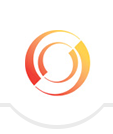Have you ever played the Matching Game with a toddler? Who usually wins? In many cases it’s the toddler who has an incredible memory for remembering what was where just a moment ago. They seem to know exactly where things are and where to go to retrieve them.
If only adults could apply a toddler’s strategy when it comes to putting things away! It is estimated that we spend 150 hours each year looking for misplaced information and other items. That’s almost four work weeks. Have you ever been working on a document and then moments later can’t seem to locate it? You scratch your head, knowing it’s got to be close by. You begin to look everywhere for it, even places you know it can’t be. You might even ask a co-worker if they took it! You begin to think you’re losing your mind – “Did I really just have that document or am I dreaming it?” Frustrating isn’t it? And to think we might be in that frustrated state of mind 150 hours is such a waste of our time and energy.
5S is a technique which helps keep an area consistently clean and organized, thus inviting efficiency and productivity. The five steps in order are Sort, Straighten, Sweep, Standardize and Sustain.
Focusing on the second “S” of Straighten, the mantra needs to be “A place for everything. Everything in its place.” When you know specifically where something is kept, you can always find it. And when you’re done using something putting it away is easier too.
What is your tendency when bringing new items into your home or office? Do you just lay them somewhere until you need them later? If you don’t choose a “home” for a new item, it will sit around, taking up space and become clutter. The easiest way to choose the right home for an item is to think of how and where that item will get used. Is it a binder which you’ll reference frequently? If so, it probably belongs on your desk or in a cabinet overhead.
Here are some zones that are found in most office spaces:
- Desktop
- Desk Drawers
- Computer and computer area
- Filing drawers
- Overhead cabinets/bins
- Space under the desk
- Space on top of filing cabinets
- Bookshelves
- Bulletin/Dry erase boards
- A work table or counter
Once you identify the zones of your office you’ll need to define how each zone will be used. i.e. If you have 4 filing drawers, how will each one be used? Perhaps one will be for employee/HR files, a 2nd one will be for training material and trad publications. The 3rd drawer might be for current customer project files and perhaps the 4th drawer will be for contracts from the past 3 years of client projects.
Defining the specific zones of your office makes it easier to assign “homes” for things as they enter your office. And once an item has a specific home, it will get used more frequently and put away more often, making it easy to find the next time it is needed.
